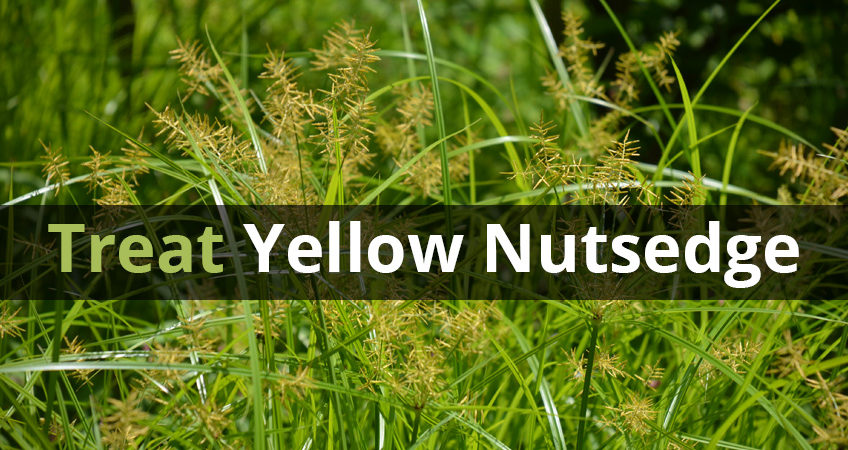Yellow nutsedge is often mistaken for crabgrass. However, the growth and control and treatment of yellow nutsedge is very different from crabgrass. Unlike crabgrass, there is no pre-emergent product available to help minimize the population of this plant.
Yellow nutsedge, aka “nutgrass” (Cyperus esculentus) is a nasty weed found in lawn and garden areas. It is a sedge, and not a grass, and methods of eliminating it vary. Yellow nutsedge is easily identified by its yellow to light green glossy leaves and the triangular shape of the stem. It grows most actively during the warm spring and summer months. Yellow nutsedge thrives under warm, wet conditions and can often be found in low, damp areas of lawns. This weed will often peak during or after seasons with above normal amounts of rainfall.
Management and environmental factors including improper mowing, overwatering, and drought, which stress or reduce the density or competitive ability of the turfgrasses, will often lead to increased yellow nutsedge. Unlike most lawn weeds, yellow nutsedge is not controlled with applications of traditional broadleaf weed control products. This weed is a member of the sedge family and requires the use of very specific herbicides to achieve satisfactory control.
Yellow nutsedge is often mistaken for crabgrass. However, the growth and control and treatment of yellow nutsedge is very different from crabgrass. Unlike crabgrass, there is no pre-emergent product available to help minimize the population of this plant.
What can be done for control:
Either you wait until late September when the nutsedge will die off on its own, or we can treat it for you with a product designed specifically for this issue. You may also want to consider treating the nutsedge yourself, in an effort to minimize cost. The product necessary for safe, effective control is called “Halosulfuron” and is sold under several brand names. Please call our office at PA:+1 (215) 364 7000 or NJ:+1 (609) 362 2612 to discuss the proper action required.
